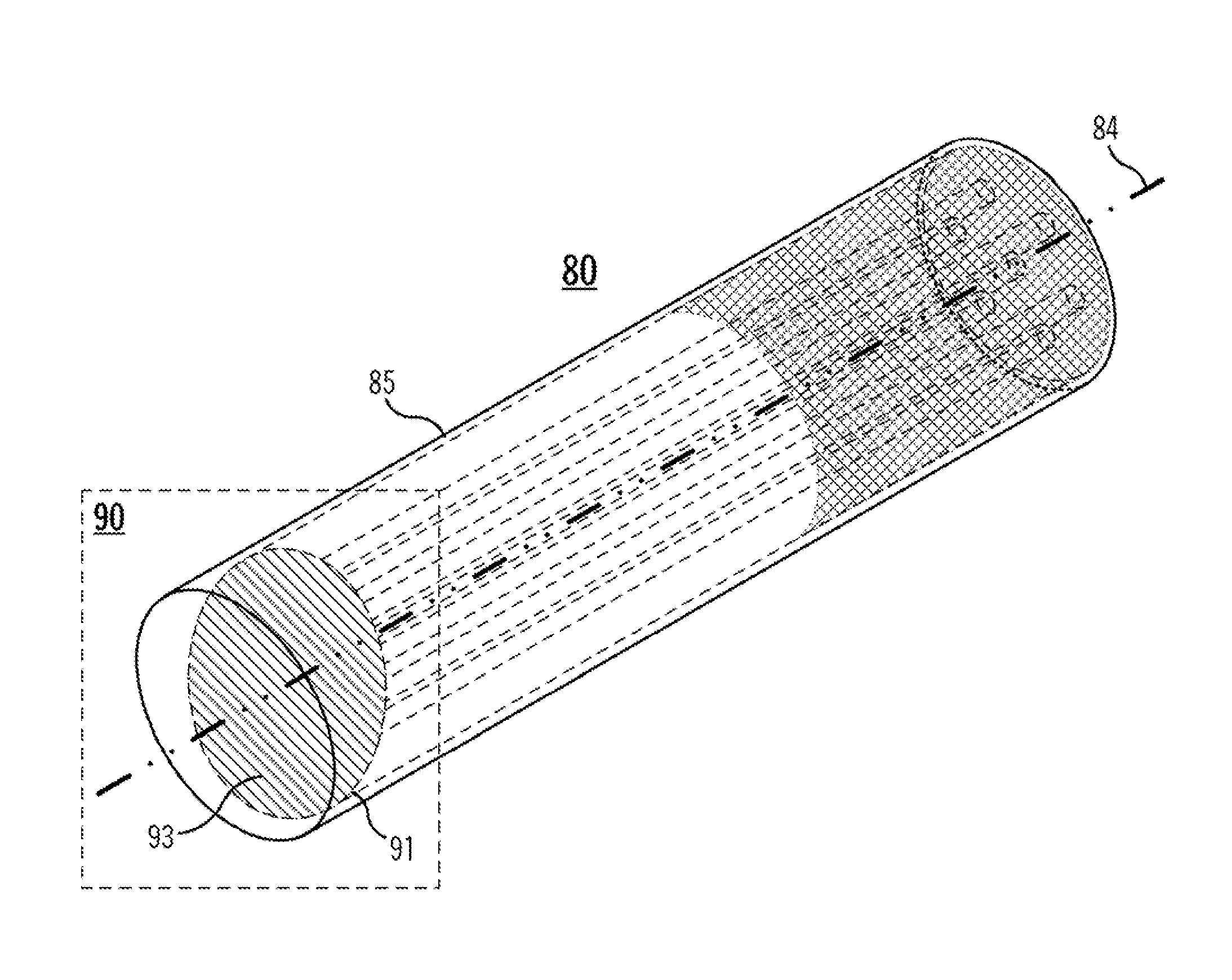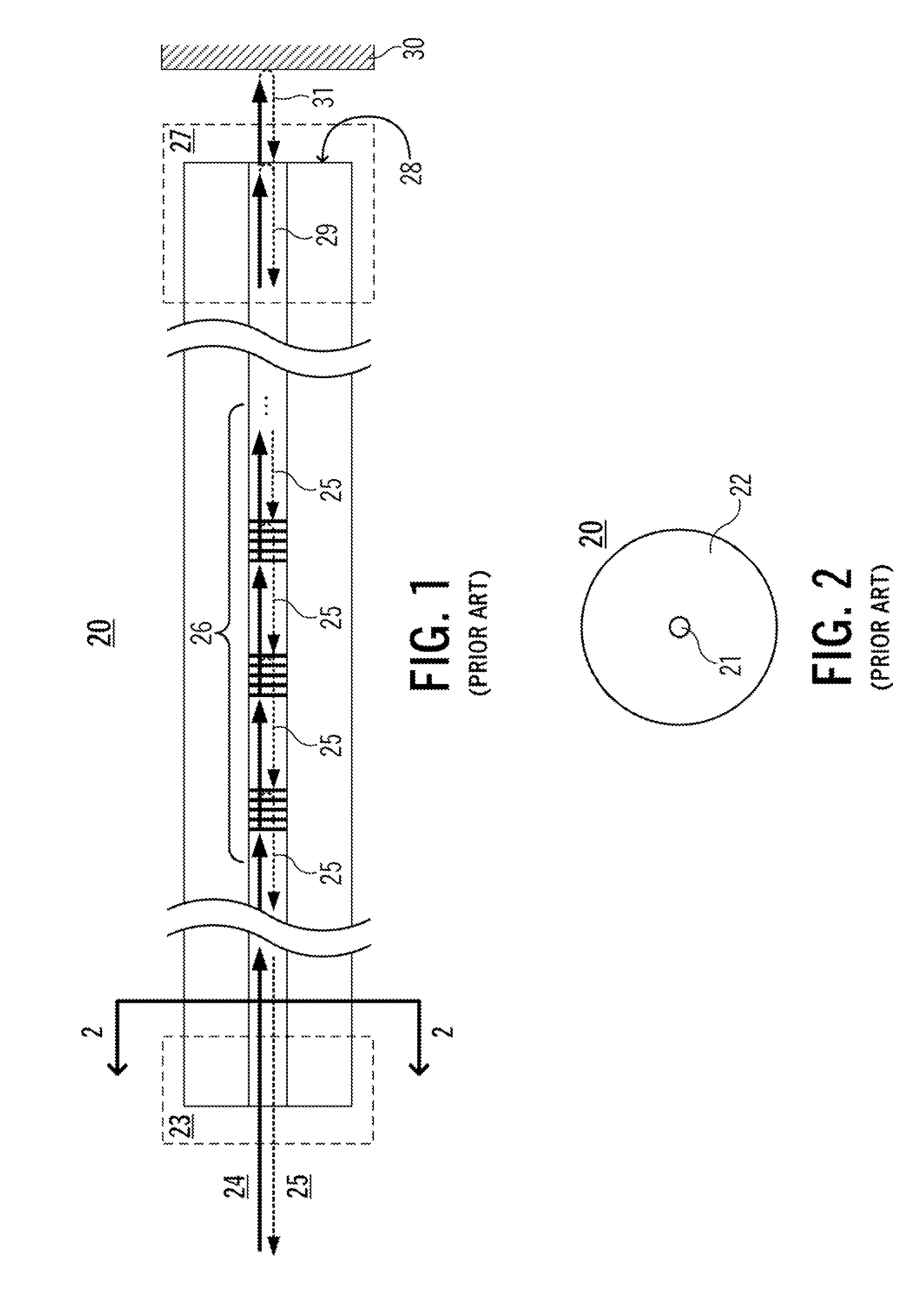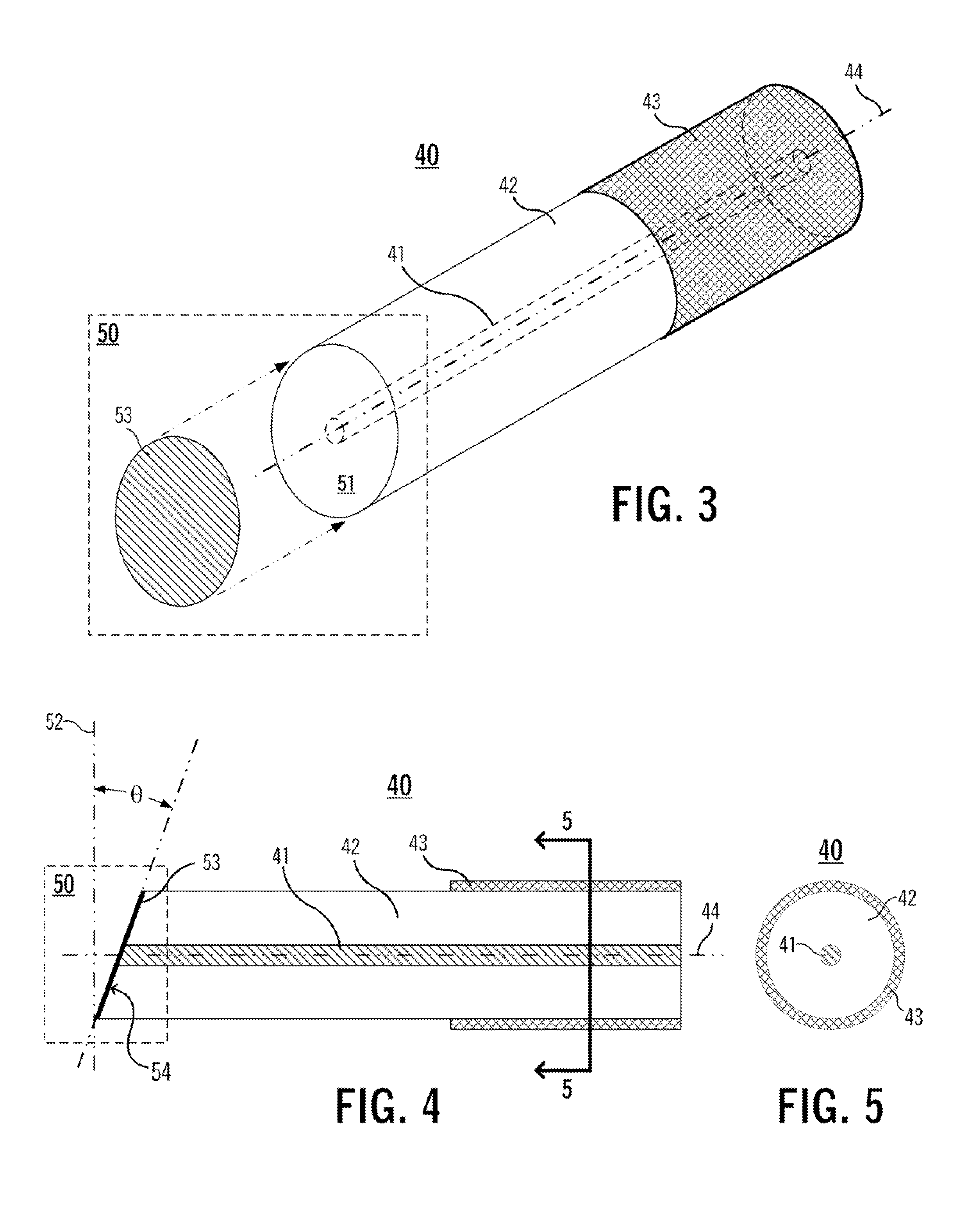Termination Of Optical Fiber With Low Backreflection
a technology of optical fibers and backscattering, applied in the field of fiber optics, can solve the problems of low reflectivity, high touch or backscattering of nearby objects, and affect the accuracy and resolution of shape/position sensing, etc., and achieve the effect of low reflectivity
- Summary
- Abstract
- Description
- Claims
- Application Information
AI Technical Summary
Benefits of technology
Problems solved by technology
Method used
Image
Examples
Embodiment Construction
[0026]Aspects of the present invention are directed to structures and techniques for terminating a sensor fiber so as to suppress backreflection from the fiber tip. A termination structure in accordance with the aspects of the invention described herein is extremely compact, having a diameter that is the same as the sensor fiber and a length that is shorter than half the fiber diameter. In addition, the described termination structure is insensitive to proximity to, or contact with, external objects; has the same mechanical strength as the sensor fiber; and is highly suitable for volume production.
[0027]FIG. 1 shows a simplified, generic cross-section diagram of a single-core sensor fiber 20, and FIG. 2 shows a cross-section diagram through the plane 2-2. Sensor fiber 20 comprises a core 21 and cladding 22 that provide a light waveguide along the length of the fiber 20.
[0028]A sensing apparatus (not shown) is connected to the fiber's tail end 23. A reference light input 24 is launch...
PUM
 Login to View More
Login to View More Abstract
Description
Claims
Application Information
 Login to View More
Login to View More - R&D
- Intellectual Property
- Life Sciences
- Materials
- Tech Scout
- Unparalleled Data Quality
- Higher Quality Content
- 60% Fewer Hallucinations
Browse by: Latest US Patents, China's latest patents, Technical Efficacy Thesaurus, Application Domain, Technology Topic, Popular Technical Reports.
© 2025 PatSnap. All rights reserved.Legal|Privacy policy|Modern Slavery Act Transparency Statement|Sitemap|About US| Contact US: help@patsnap.com



